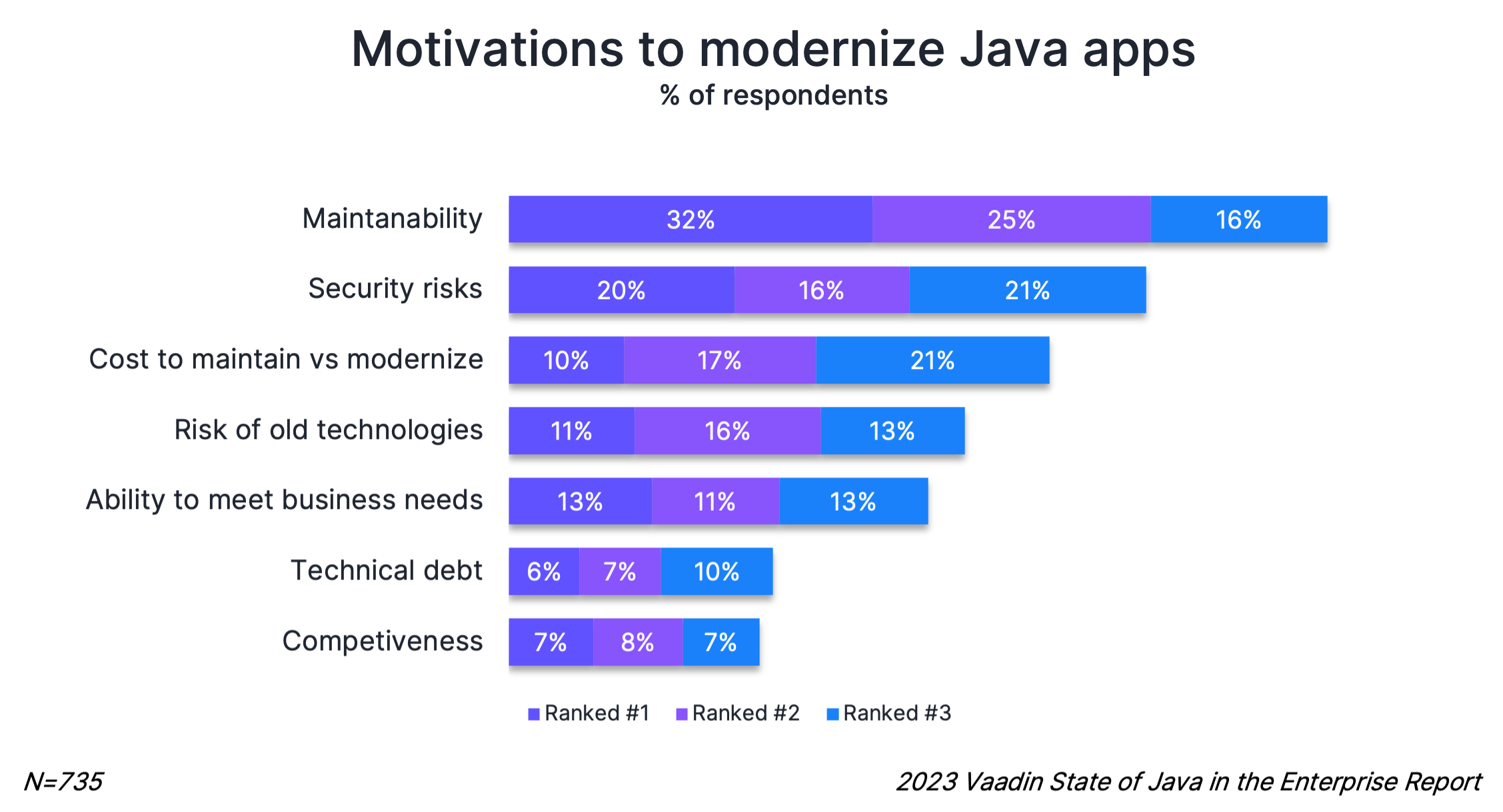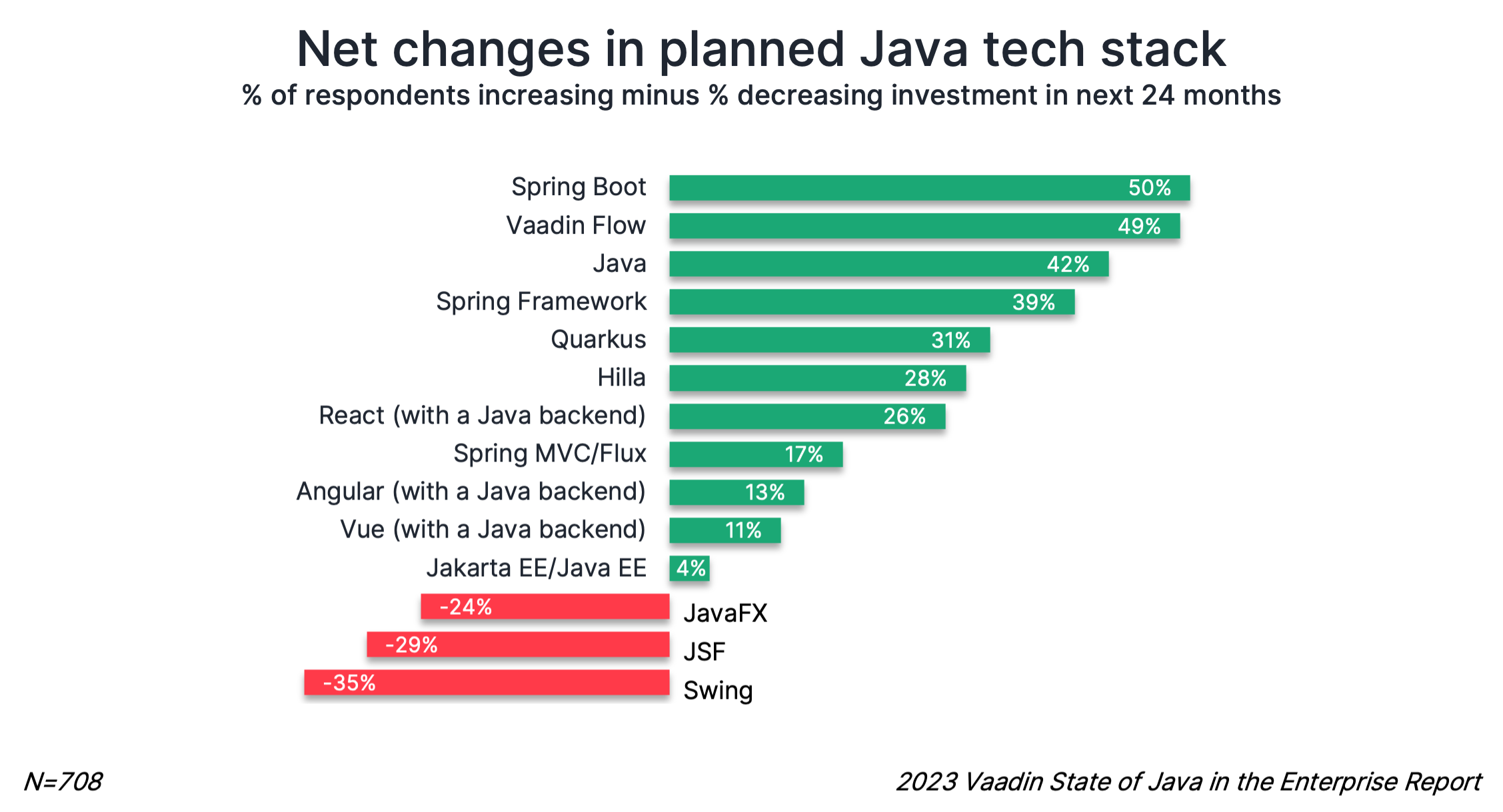Gainers and losers emerge in Java tech stacks
Spring Boot will gain the most users with a net 50 percent of respondents planning to increase usage. Frameworks such as Vaadin Flow, Spring Framework, Quarkus, Hilla, and React are also expected to see net increases in adoption.







